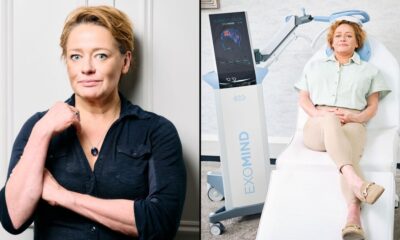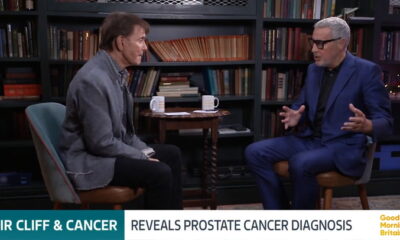Health
Comedian Reflects on Life Without Mental Imagery

During a turbulent flight in March 2024, a comedian faced a moment of fear that led to a surprising self-discovery. As the plane shook violently, thoughts of his parents rushed through his mind, but he realized he could not visualize their faces. This moment prompted him to reflect on his unique cognitive experience, which aligns with a condition known as aphantasia.
Understanding Aphantasia
Aphantasia is the inability to form mental images. While many people can visualize faces, places, or scenarios, those with aphantasia experience the world differently. For this comedian, the realization that he shares this cognitive trait with others was both enlightening and bewildering. He recounted a conversation with a fellow comedian who mentioned his own struggles with mental imagery, sparking the comedian’s exploration of his own mind.
“I find it crazy that people can think in images,” he stated. This insight highlights a fundamental difference in how individuals construct their realities. For him, thoughts manifest in the form of language rather than pictures. He expressed a sense of isolation, noting that most people assume their cognitive processes are similar, unaware of the variations that exist.
The Impact of Aphantasia on Daily Life
Living with aphantasia can affect various aspects of life, particularly for someone in a creative field like comedy. The ability to visualize can enhance storytelling and performance, providing vivid imagery that resonates with audiences. However, this comedian has learned to navigate his career using his strength in language. He describes his thought processes as rich in words, allowing him to construct narratives and jokes relying on linguistic creativity rather than visual elements.
The experience of turbulence on the flight served as a poignant reminder of his cognitive difference. While others might see their lives flash before their eyes, he confronted the reality of his condition in that moment of panic. This unique perspective has shaped not only his personal reflections but also his approach to comedy, emphasizing the beauty of language over imagery.
As discussions around cognitive diversity continue to emerge, the comedian’s story sheds light on the varied ways individuals experience the world. His journey emphasizes that while some may see in pictures, others derive meaning and creativity from words. This realization can foster greater understanding and appreciation for the diverse ways people think and express themselves.
-

 World2 weeks ago
World2 weeks agoCoronation Street’s Shocking Murder Twist Reveals Family Secrets
-

 Entertainment1 week ago
Entertainment1 week agoAndrew Pierce Confirms Departure from ITV’s Good Morning Britain
-

 Entertainment5 months ago
Entertainment5 months agoKate Garraway Sells £2 Million Home Amid Financial Struggles
-

 Entertainment4 months ago
Entertainment4 months agoAnn Ming Reflects on ITV’s ‘I Fought the Law’ Drama
-

 Entertainment1 month ago
Entertainment1 month agoCoronation Street Fans React as Todd Faces Heartbreaking Choice
-

 Health4 months ago
Health4 months agoKatie Price Faces New Health Concerns After Cancer Symptoms Resurface
-

 World1 month ago
World1 month agoBailey Announces Heartbreaking Split from Rebecca After Reunion
-

 Entertainment2 weeks ago
Entertainment2 weeks agoTwo Stars Evicted from I’m A Celebrity Just Days Before Finale
-

 Entertainment4 months ago
Entertainment4 months agoCoronation Street’s Carl Webster Faces Trouble with New Affairs
-

 World2 weeks ago
World2 weeks agoKevin Sinfield Exceeds Fundraising Goal Ahead of Final Marathons
-

 Entertainment4 months ago
Entertainment4 months agoWhere is Tinder Swindler Simon Leviev? Latest Updates Revealed
-

 Entertainment5 months ago
Entertainment5 months agoMarkiplier Addresses AI Controversy During Livestream Response





















